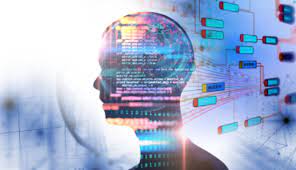The web is no longer just a space for publishing static pages—it has evolved into a dynamic ecosystem of personalized experiences, scalable platforms, and intelligent design. Behind this shift lies the growing role of artificial intelligence (AI) and, more specifically, the Model Context Protocol (MCP). Together, they are transforming how professional web creators design, manage, and scale websites in ways that were unimaginable a decade ago.
From Automation to Intelligent Collaboration
Traditional web creation relied on manual workflows and repetitive tasks—building templates, writing code snippets, optimizing images, and running performance checks. While automation improved efficiency, it often lacked adaptability. MCP is changing this narrative by enabling intelligent collaboration between AI models and the tools web creators already use.
Instead of replacing professionals, MCP acts as a bridge, allowing AI to understand project requirements, pull relevant resources, and suggest context-aware improvements. This makes the entire process faster, smarter, and more aligned with real-world needs.
Unified Design and Development Workflows
For agencies, freelancers, and enterprises, consistency across multiple projects is a constant challenge. With MCP, design variables, filters, and brand guidelines can be embedded directly into workflows. This ensures that:
- Every website adheres to brand identity without manual policing.
- Accessibility standards are baked into the design from the beginning.
- Semantic HTML and clean CSS structures are generated automatically, enhancing both usability and search engine performance.
By aligning design and development in a single intelligent loop, MCP reduces friction and ensures greater quality control at scale.
Smarter Content and User Experiences
Content is at the heart of web creation, and AI, guided by MCP, takes it to the next level. By connecting with analytics, CRM systems, and customer data, AI can generate personalized experiences for different audience segments. Imagine a website that automatically adapts product recommendations, layout, and messaging based on user intent—all without constant manual updates.
This ability to personalize at scale not only improves user satisfaction but also drives engagement, conversions, and long-term loyalty.
Streamlining Performance and Maintenance
Beyond aesthetics and content, MCP-driven AI also plays a vital role in performance optimization. It can detect inefficient code, identify security vulnerabilities, and recommend server adjustments in real time. For professional creators, this means fewer late-night troubleshooting sessions and more confidence in delivering high-performing, secure websites.
Maintenance is also becoming predictive. With MCP, AI can analyze usage patterns, anticipate technical issues, and even schedule proactive fixes before problems escalate. This ensures that websites remain reliable and future-ready.
Scaling Without Limits
For large teams and digital agencies managing hundreds of websites, scalability is often the biggest bottleneck. MCP provides the framework to standardize processes across projects—whether it’s deploying updates, rolling out new features, or ensuring compliance with evolving industry standards.
By reducing redundancy and centralizing control, web creators can scale operations without sacrificing quality—an advantage that becomes crucial in competitive digital markets.
A Paradigm Shift for the Future
The introduction of Model Context Protocol is more than just a technical upgrade; it represents a paradigm shift in web creation. Instead of isolated tools and disconnected processes, professionals now have access to a unified ecosystem where AI understands context, adapts to workflows, and enhances creativity.
Looking ahead, we can expect MCP-powered AI to handle more advanced responsibilities, such as real-time SEO optimization, automated compliance checks, and fully adaptive website architectures that evolve with business goals.

